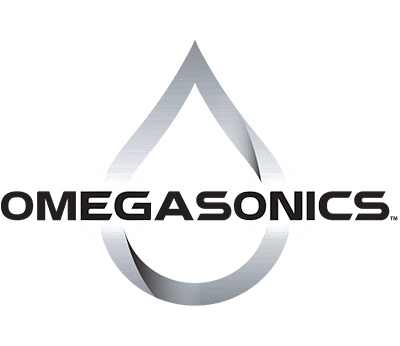Sound travels in waves. Imagine that if you could see sound waves–they might look something like ocean waves. Then, visualize those waves or ripples passing by an object, such as a piling standing in the water.
The number of waves that pass by the piling per second would be the frequency. Frequency is usually measured by “hertz,” a unit of measurement which corresponds to one cycle per second.
High-frequency sound waves such as ultrasonic waves are measured in thousands of cycles per second, or kilohertz (kHz). Ultrasound starts at the upper limit of human hearing, approximately 20 kHz. Many animals can hear above this range, such as dogs and bats, and some, such as dolphins, communicate using it.
Ultrasound’s Many Uses
Ultrasound has many uses across a myriad of industries and fields, from the pharmaceutical industry to the military. In general, applications which use ultrasound start from 20 kHz and may reach into the single-digit gigahertz (GHz) range. Applications of ultrasound include non-contact sensors, motion sensors, flow measurers, materials testing, range finding and medical imaging. Of course, at Omegasonics, our focus is on ultrasonic cleaning.
How Does Ultrasound Clean?
Ultrasound cleans objects through cavitation. Cavitation is a physics phenomenon that occurs when liquid is disturbed–in this case, when ultrasonic waves pass through it. When the pressure of the waves moves through the liquid, it creates millions of tiny bubbles in its wake. When these bubbles collapse, this cavitation effect releases energetic jets of liquid directly at any hard surface near them. These jets dislodge dirt and grime from the surface to be cleaned. They’re even more effective when the liquid is heated and a solvent is used.
How Ultrasound is Generated
Ultrasound is generated by the piezoelectric effect through a ceramic or quartz-like material such as lead zirconate titanate. The vibrations are transmitted to a diaphragm, which in turn transmits waves through a liquid, not unlike a stereo speaker transmitting sound through the air.
Different Frequency Levels and What They Can Do
Perhaps, contrary to instinct, the higher the frequency, the more gentle the cleaning that results. Below are some examples of kilohertz levels and the different cleaning applications for which they’re used:
25 kHz – Heavy and Rough Cleaning
Used for rough jobs on large items not requiring a lot of care or finesse. The lower frequency means stronger vibrations, which can provide more of a “punch” and remove stubborn materials. Only used with items that can take rough handling.
40 kHz: All-Around General Cleaning
This frequency level is used in roughly 90 percent of all cleaning, as the cavitation bubbles formed do a good job of penetrating most crevices and are gentle enough not to damage most materials. Often used for cleaning guns, car parts and medical equipment.
68/132/170 kHz: A Gentle Cleaning
Around 5 percent of ultrasonic cleaning reaches this level of frequency. Here, the waves are small enough to clean but without causing damage to delicate materials or components. Often used for cleaning electronics, such as circuit boards. Medical implants are cleaned at these higher frequencies for a more precise final stage cleaning process.
1,000 kHz (1 MHz): Megasonic Cleaning
When sonic frequencies reach 1 million cycles per second, they are referred to as “megahertz.” Cavitation at these levels is much gentler and can be controlled. This allows for the most precise cleaning possible. This is the level at which semiconductor wafers are cleaned, as it completely removes all foreign contaminants down to the micro level.
Why Use Ultrasonic Cleaning?
Ultrasonic cleaning is more effective than traditional brush cleaning because of its ability to reach into the tiniest crevices of any object, cleaning even the most irregular and convoluted surfaces completely and thoroughly. Not only does ultrasonic cleaning clean thoroughly, but it also gives great ROI for business owners using it. Considering how much labor time it saves, allowing for workers to be assigned to other tasks, ultrasonic cleaning provides efficiency and, ultimately, labor and money savings, too.
Interested in knowing more about ultrasonic cleaning and how it can benefit you? Visit our Ultrasonic Cleaning 101 page on our site. Find out more by calling your Omegasonics representative at 888-989-5560 or email us at
